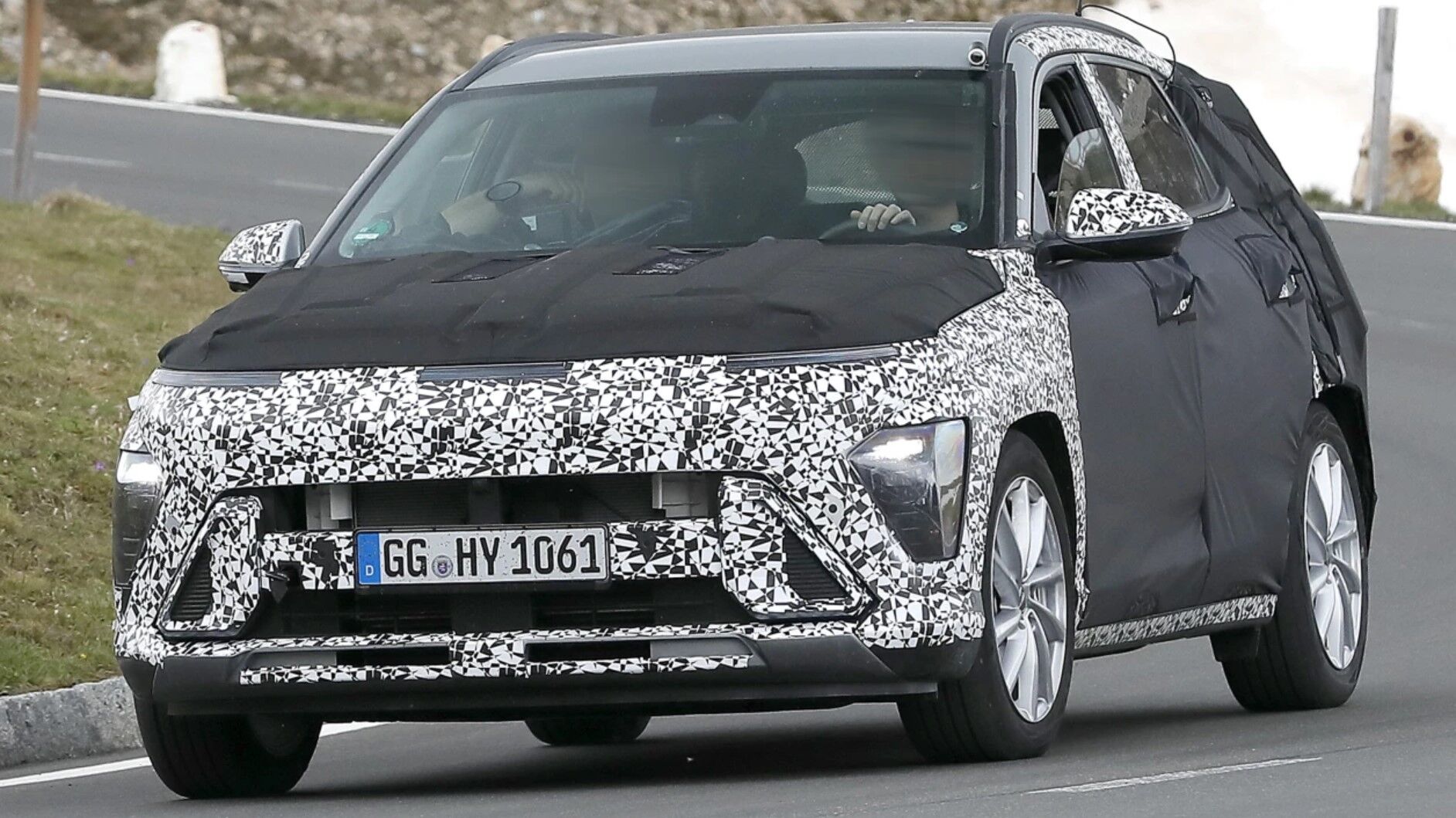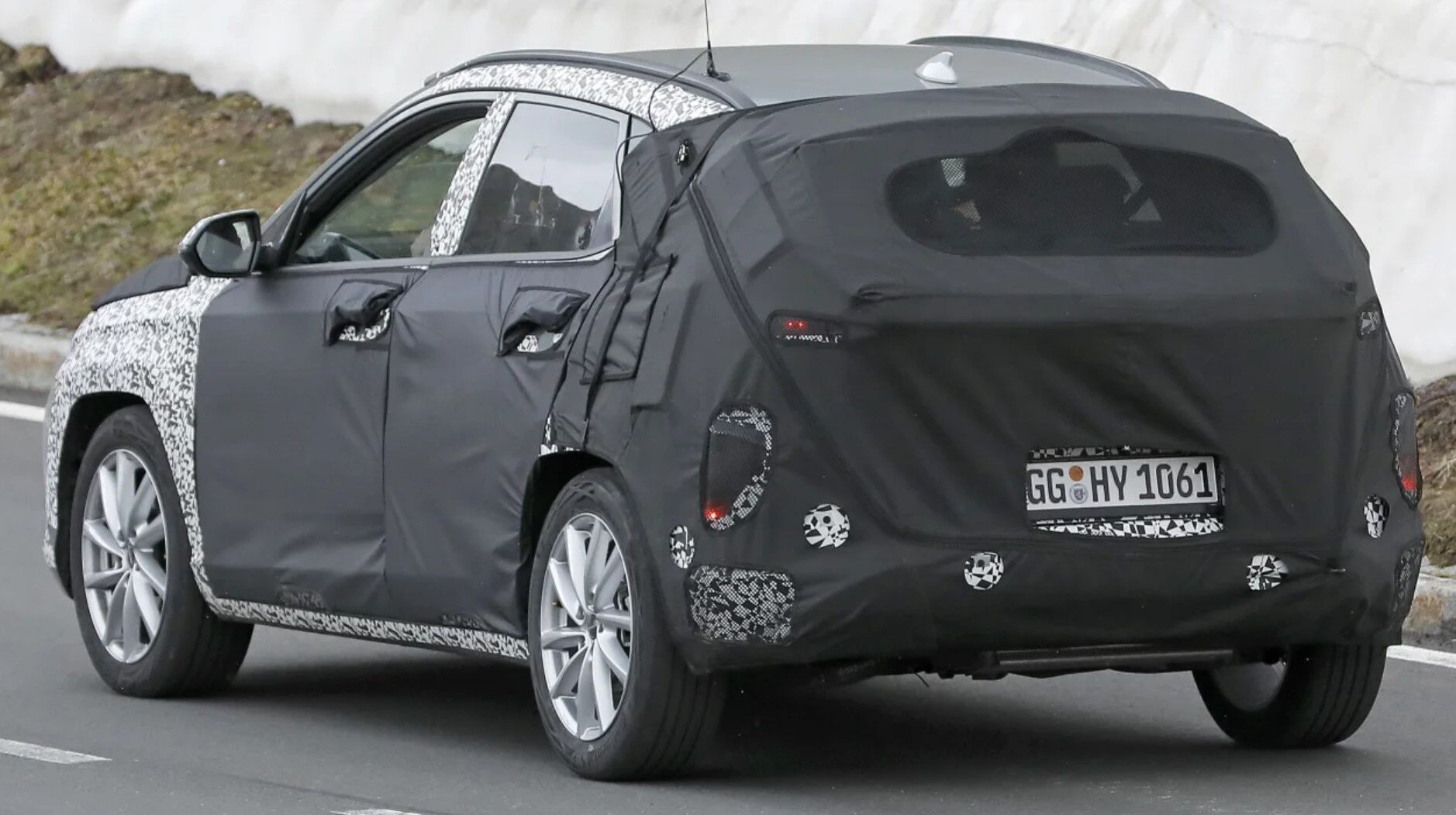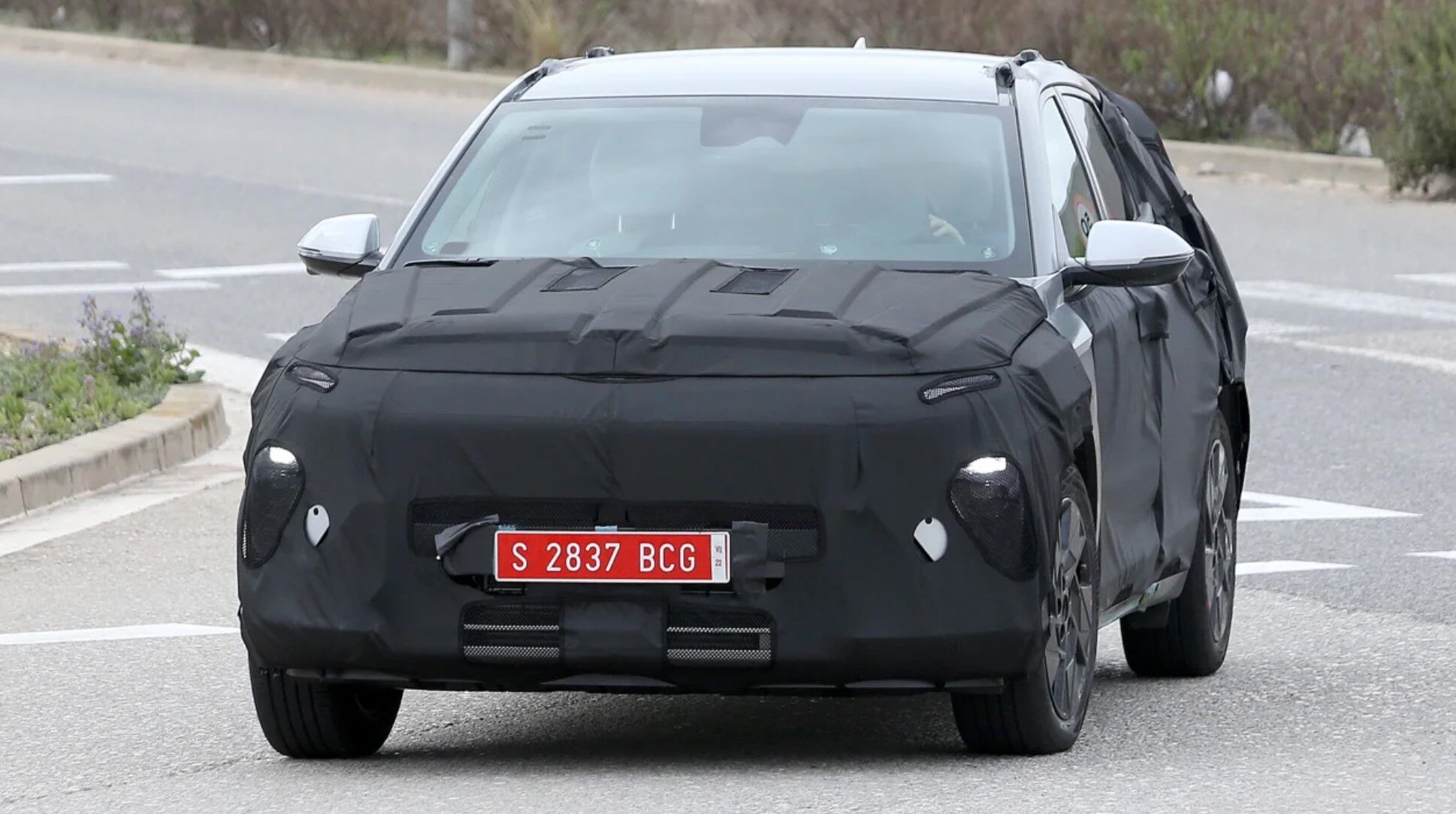The new Hyundai Kona is in development and set to continue with the choice of hybrid or fully electric powertrains.
Such is the pace of development in the compact SUV world that we’re never far away from a fresh debut – and the next car to take aim at the top of its class will be the second-generation Hyundai Kona.
Automotive Daily understands that the compact SUV will break cover early next year, and development prototypes are already being tested around the world.
As with sister brand Kia’s Niro family, it’s likely that the upcoming Kona will move to the Hyundai Motor Group’s latest K3 platform, and deliver greater practicality.
Full-hybrid and all-electric models are expected to be offered, with the Kona HEV set to use a 1.6-litre four-cylinder petrol engine and a 1.32kWh battery that supplies an electric motor. Combined, these should produce 104kW.
Hyundai doesn’t currently offer a plug-in powertrain in its Kona, and this will probably be the case with the new car. However, it will continue with the full-electric version. The Kona Electric should get a slight increase in battery capacity compared with the current car, up from 64kWh to 64.8kWh, feeding a 150kW motor on the front axle. Aero and efficiency tweaks could boost its range to just beyond 480km.
Alongside the firm’s Bayon crossover and larger Tucson SUV, there’s room for the Kona to grow. The new car will offer an increase in cabin space and practicality, with luggage capacity increasing from 332 litres to more than 400 litres in the hybrid model.
The Kona will also take on a distinctive new design. Our rendering above shows what this might look like, with a full-width LED running light bar sitting just beneath the bonnet shut line. Hyundai’s parametric pixel lights will also feature at the extremes of the bumper, evolving the split-headlight design used on the original model.
The Kona will get an equally significant makeover inside, too. It’ll draw on many elements first seen on the firm’s Ioniq 5 EV, such as a rotary gear selector mounted on the steering column cowl.
The digital dash and infotainment panel should also reflect that car’s layout, with the potential for two 10.25-inch displays to sit on top of the fascia. Early spy shots show that there’ll still be physical shortcut keys for the system’s main functions, however.
The original Kona was unveiled in 2017, and a similar life cycle would take the new car towards the end of the decade.
It’s at this point when the nameplate may disappear, as previously outlined by the firm’s Executive Vice President of Product Strategy, Thomas Schemera. He’s previously commented that a replacement for the Kona could wear an Ioniq badge in time – potentially as a 3 or 4 – underpinned by the firm’s all-electric E-GMP platform.
Sean Carson








